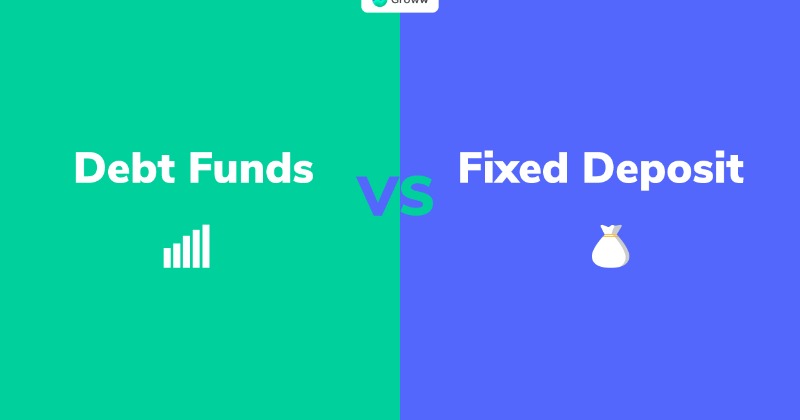In the world of financial investments, two options stand out prominently for risk-averse individuals: Fixed Deposits (FDs) and Debt Mutual Funds. Each begins with the letter “F,” symbolizing a focus on financial security. Let’s delve into their comparisons and distinctions.
Fixed Deposits: A Snapshot
FDs, a traditional investment avenue, involve depositing a lump sum amount with a bank or financial institution for a fixed tenure at a predetermined interest rate. They offer a fixed return, guaranteeing the principal amount and interest upon maturity. Typically, FDs are favored for their stability and reliability.
Debt Mutual Funds: An Alternative Perspective
Contrarily, Debt Mutual Funds invest in a portfolio of fixed-income securities such as government securities, corporate bonds, and money market instruments. The returns here are market-linked and subject to fluctuations based on interest rate movements. These funds offer diversification and professional management but come with inherent market risks.
Financial Comparison and Crucial Considerations
Interest Rates and Returns: FDs present a fixed interest rate, ensuring a definite return at maturity. Debt Mutual Funds, however, offer variable returns influenced by market dynamics. The potential for higher returns exists in mutual funds but at the cost of higher risk compared to the stable returns of FDs.
Liquidity and Lock-in Period: FDs commonly have a fixed tenure with limited liquidity. Premature withdrawals often incur penalties. Debt Mutual Funds, on the other hand, offer better liquidity, allowing investors to redeem their units based on prevailing Net Asset Value (NAV). They generally have no lock-in period, offering flexibility.
Risk Exposure and Safety: FDs are considered low-risk investments due to their fixed returns and the safety net provided by the institution. In contrast, Debt Mutual Funds carry varying degrees of risk, primarily associated with interest rate fluctuations and credit risks of the underlying securities.
Expert Insights and Investor Recommendations
According to financial experts, the choice between FDs and Debt Mutual Funds largely depends on an individual’s risk appetite, financial goals, and investment horizon. Conservative investors leaning towards stability often opt for FDs, prioritizing guaranteed returns. Conversely, investors seeking potential higher returns and willing to accept market-linked risks may consider Debt Mutual Funds.
In conclusion, while FDs and Debt Mutual Funds serve as secure investment options, their fundamental differences lie in the guaranteed returns of FDs versus the market-linked potential of Mutual Funds. Investors should weigh these factors meticulously before making informed investment decisions aligned with their financial objectives.
The financial landscape offers a diverse array of options, with FDs and Debt Mutual Funds catering to distinct investor preferences. Understanding their nuances empowers individuals to navigate the investment realm astutely and make sound financial choices tailored to their needs and aspirations.
























